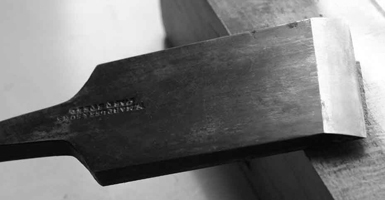xy mosian
Established Member
Ok! Given the snags to re-forming the edge above. Wouldn't it be wise to start easily rather than to assume that all is well and to belt the living daylights out of the chisel.
Hollow grinding can be avoided, even on small grinding wheels, by grinding across the bevel. Of course you have to watch what is happening.
xy
Hollow grinding can be avoided, even on small grinding wheels, by grinding across the bevel. Of course you have to watch what is happening.
xy



































